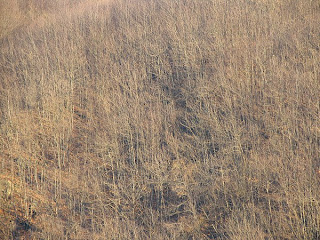The Gift From The Misty Monkeys
Written by Rajkamal Goswami, RA, KMTR
The sun scorched above me as I started my trip up the misty mountains to revisit my extended family of Nilgiri langurs, the Misty Monkeys of the Sahayadris. In the next two and a half hours, dramatic changes in weather conditions would unfold.

I would be climbing from sea-level to 1330 meters above sea level and the temperatures would drop from a scorching 38-39 degrees centigrade to a cool 18-22 degrees centigrade.
I feel apprehensive as I climb higher and higher. The first glimpse of a lonely Langur during the trip makes my heart almost skip a beat. Would the Nilgiri langur families whom I had befriended still remember me as I do them? Would they still be as friendly towards me as before or would I have to start the whole process again?

I did miss them in my urban abode. Did they too miss me??? All these questions kept churning inside my head as I reached our field station. I had a quick dinner prepared by the ever-smiling Rajan and then crashed for the night inside my warm sleeping bag.
Next day at 5.00am I was on my way after filling my flask with some hot tea. Amidst the fusion of darkness and the faint early dawn light, I trod along a trail running right through a nullah. I fervently hoped that the search won’t be a long one. Thankfully, I spotted some of my misty monkey friends pretty soon. They were busy breaking their roost with some of them already feeding on Cullenia exarillata flowers.

My anxious questions were answered soon. Viola!!!! They hadn’t forgotten me!!! They didn’t run away from me as I approached them except for that old female whom I had observed as a confirmed loner, and two other females. I was a bit puzzled to see this trio staying away and acting a bit coy. When I observed them carefully, I had a pleasant surprise.
All three of them were nursing three very cute brown hairless Nilgiri langur infants! What a lovely gift they presented me with on my return. So, the rain had worked it’s magic! I was overjoyed to see the baby monkeys. I did expect to see some newborn langurs, as this is the time of the year when it is peak birth season among them. However, never did I realize that nature would be so bountiful upon them. Three new births in a troop of 12 langurs is big news!

Watching the activities of the new born monkeys was nostalgic. The first hesitant and guarded steps of the infants climbing from one branch to another with the mother watching intently, reminded me of my own childhood days when committing mistakes and falling down were actually fun. It was a treat to watch the newborn babies. For about a week, the new borns didn’t move at all except for curling up in their mother’s cozy lap.
The mothers were also extremely protective. On the slightest sign of alarm or distress the mothers would hide their babies tightly inside their arms. Then, they would quickly run up to an invisible part of the tree, mostly a high well leaved branch. After about a week or so the babies started to venture out on their own, by moving out a step or so from their mother’s lap but would quickly return to safety. Their real play activities started when they turned a month old. They would jump from one branch to another with very short leaps, while the mother would be feeding on some fruits, flowers or leaves.
The babies would also try to occasionally imitate their feeding mother by trying to eat some leaves or flowers but then they wouldn’t really eat them
 . When they were afraid or nervous the babies would emit some sounds similar to the chirping of birds. I noticed this quite conspicuously in a 2-3 week old infant when he reacted nervously to the loud hoo hoo call of the alpha or the dominant male.
. When they were afraid or nervous the babies would emit some sounds similar to the chirping of birds. I noticed this quite conspicuously in a 2-3 week old infant when he reacted nervously to the loud hoo hoo call of the alpha or the dominant male.To me, watching these infants grow has been as rewarding as watching my close relative grow. Their mistakes, their vulnerabilities, their nervous looks, their curiosities are so very similar to ours. Observing the activities of these infants felt like I was revisiting my own infanthood.
 About the author: Rajkamal works as a Research Associate with Dr T. Ganesh, ATREE Fellow. His current research work focuses on observing the behavioral response of the Nilgiri Langurs to various disturbance gradients in the Kodayar range of the Kallakad Mundanthurai Tiger Reserve in Tamil Nadu.
About the author: Rajkamal works as a Research Associate with Dr T. Ganesh, ATREE Fellow. His current research work focuses on observing the behavioral response of the Nilgiri Langurs to various disturbance gradients in the Kodayar range of the Kallakad Mundanthurai Tiger Reserve in Tamil Nadu.Terms of use: You are permitted to print / download / email this article for your personal non-commercial use only. No part of this article may be reproduced or transmitted to or stored in any other web site or published in print media without prior written permission of the author of this article - Rajkamal Goswami. Requests to republish this article may be addressed to Rajkamal Goswami at rajkamal@atree.org or The Eco-Informatics Centre at ecoinfoindia@atree.org.














